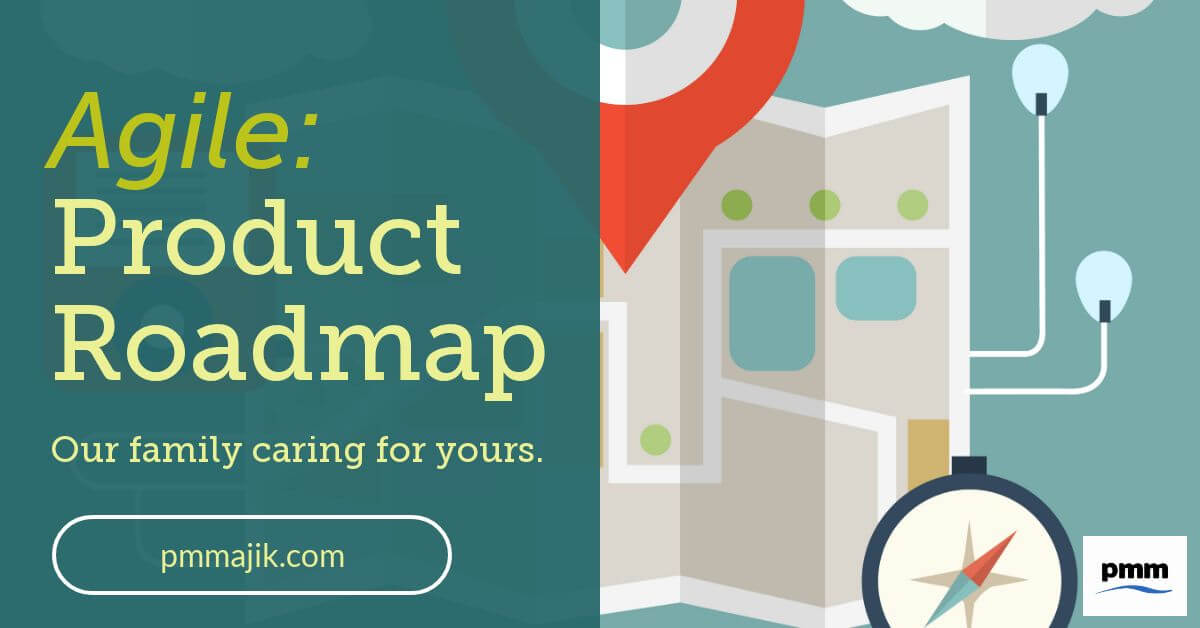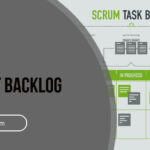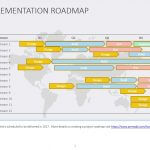The product roadmap is a visual, high-level plan, which identifies how a product will evolve over time. Their linear fashion traditionally associates them with waterfall teams, however they are just as important for agile teams.
Roadmaps are used by Product Owners to depict the future functionality of a product, highlighting when new features will be released. Using a roadmap in agile development adds context to the everyday project work, responding to shifts in the competitive environment.
Why have a product roadmap?
Agile teams can be confused as to why they need a product roadmap, after all, the roadmap is a long-term plan, which on the surface, doesn’t seem to be compatible with agile.
Inventor of the Eisenhower Matrix, Dwight D. Eisenhower famously declared that plans are “useless”, however what is often forgotten is that this was followed up with the line, “planning is indispensable”.
Product backlogs are relied upon heavily in agile, however they should not be substituted for a product roadmap.
The backlog tracks what is coming in the short-term, i.e. the next few sprints, the product roadmap however aligns with the organisation’s strategy to identify where the product is heading in the mid to long-term. It is quite clear therefore, that both the backlog and roadmap should be used.
It is important to remember however, that the roadmap is an agile document, not a set plan, and should be treated as a living document to be discussed and updated regularly. Much in the same way as the product backlog.
This should also be communicated to stakeholders, to manage their expectations of when features will be delivered. It may be a good idea to omit specific dates and keep the roadmap to a monthly or quarterly level.
The product roadmap process
The agile road mapping process can be captured in six steps. The steps are very similar to the process for creating any roadmap, however the difference lies in the final product and how it is used.
Understand the organisations objectives and KPI’s
The organisation’s objectives are the first point of the road mapping process. A plan cannot be developed unless the team know where they are going, and why. Once the objectives and KPI’s have been identified and understood, an appropriate plan can be formulated.
Consult the product vision statement
Commonly, objectives and KPI’s are aligned with timelines, such as quarters or financial years, which are somewhat near-term. The roadmap is longer-term and so the objectives identified in the product vision statement should be revisited prior to planning and should be at the forefront of everyone’s minds throughout the process. This will ensure that the plan aligns with the vision.
Communicate with clients
The ultimate aim of any project is to satisfy the want or need of a client. To ensure that the project is on track to achieve this it is key that clients are involved, and so clients should be contacted before the roadmap is constructed.
It should also be noted however that the client may not necessarily be the end-user of the product, and as such there should be conversations with both parties.
Identify themes
Once short and long-term objectives have been established, and communication with clients has taken place, it is time to start focusing on the problems to be solved. The problems should have become apparent during the previous stages and can be grouped into themes to structure the roadmap around.
Prioritise
Now the themes have been identified, they should be prioritised according to importance. Projects have limited budgets, and therefore it is impossible to allocate resources to undertake everything at once.
Themes should be prioritised according to product vision, KPI’s and the resources that are available.
Build
Finally, the roadmap can be built. Significant consideration should be given to the audience that will review the plan. It may be presented to executive stakeholders to obtain buy-in, however it may also need to be reviewed by members of the project team, such as engineers, designers or marketeers. The plan should therefore be clear enough that all stakeholders can understand it, or, if this is not possible, then different versions of the plan should be made for different audiences.
Despite being traditionally associated with project management methods such as waterfall, product roadmaps are an essential addition to agile processes. Agile road mapping is an ongoing, iterative activity, not simply an item to be crossed off a check list.






